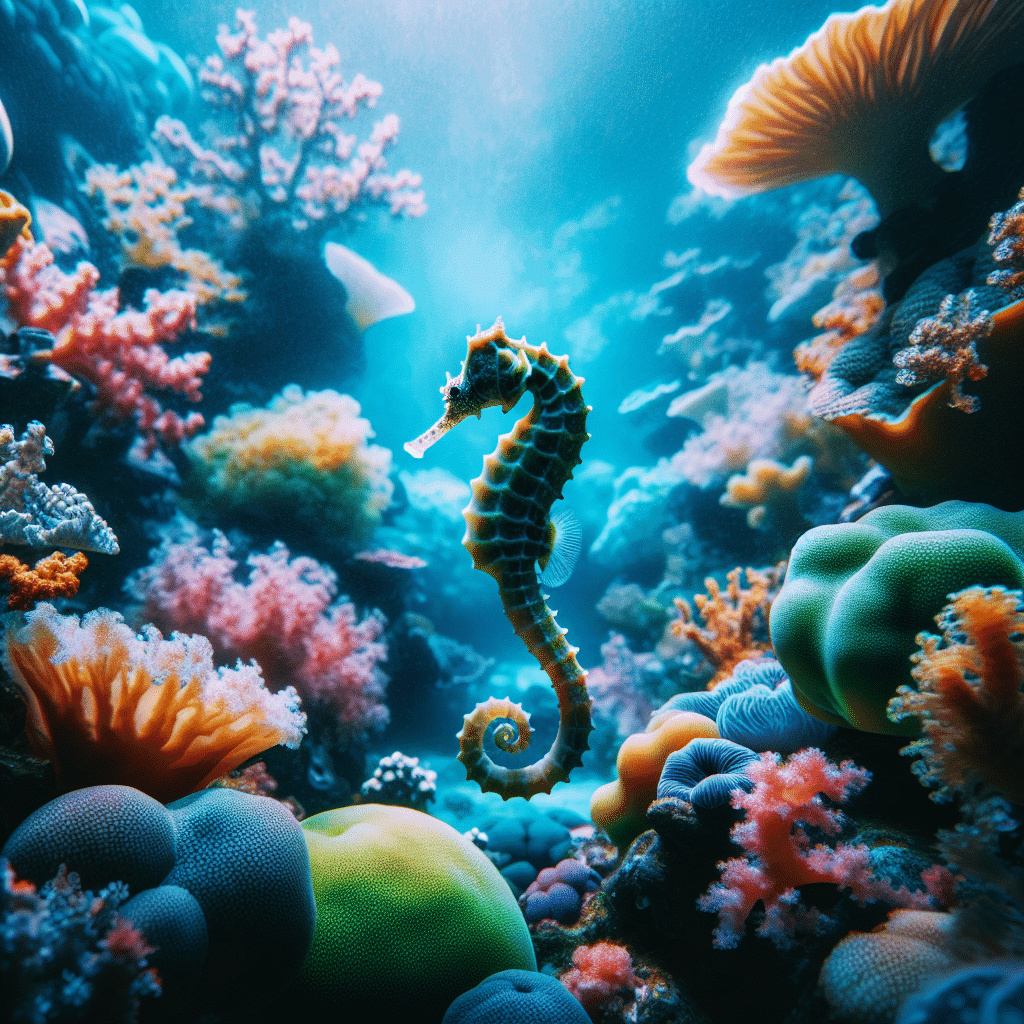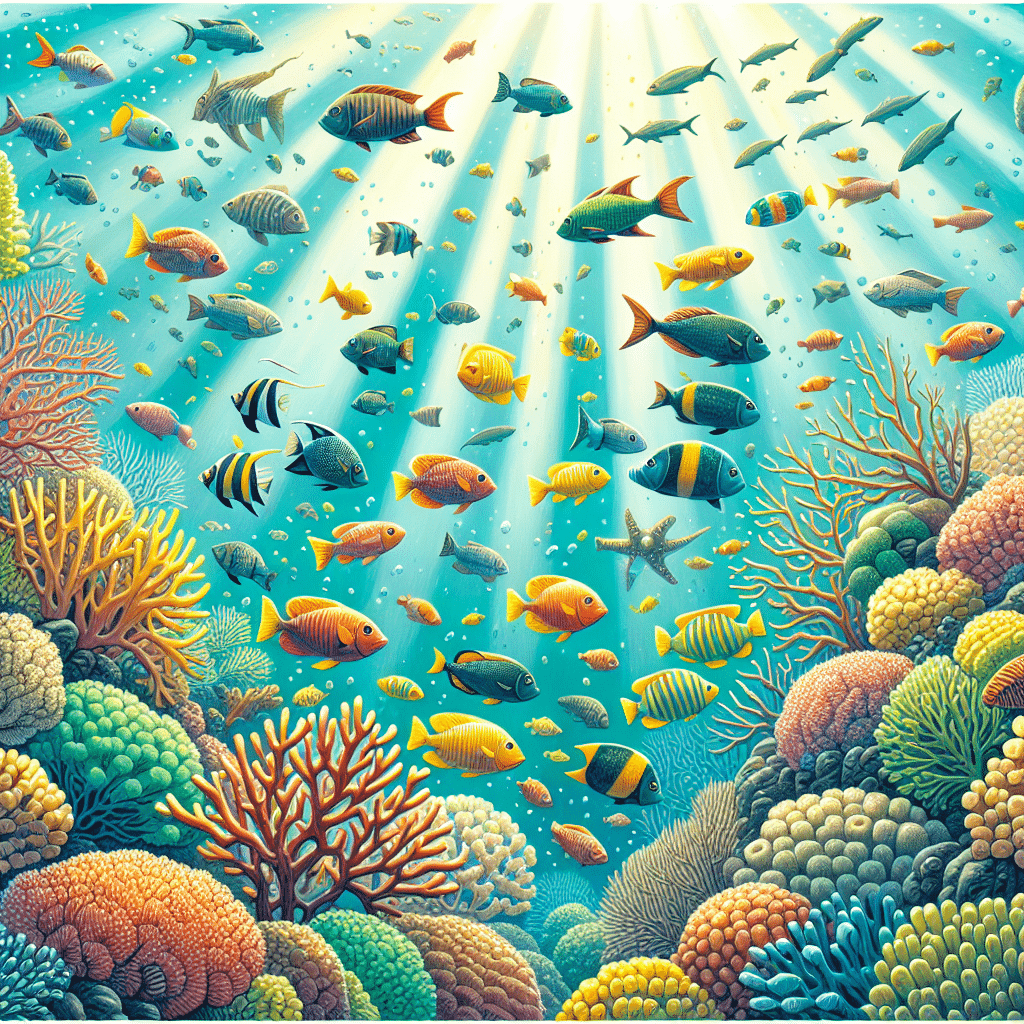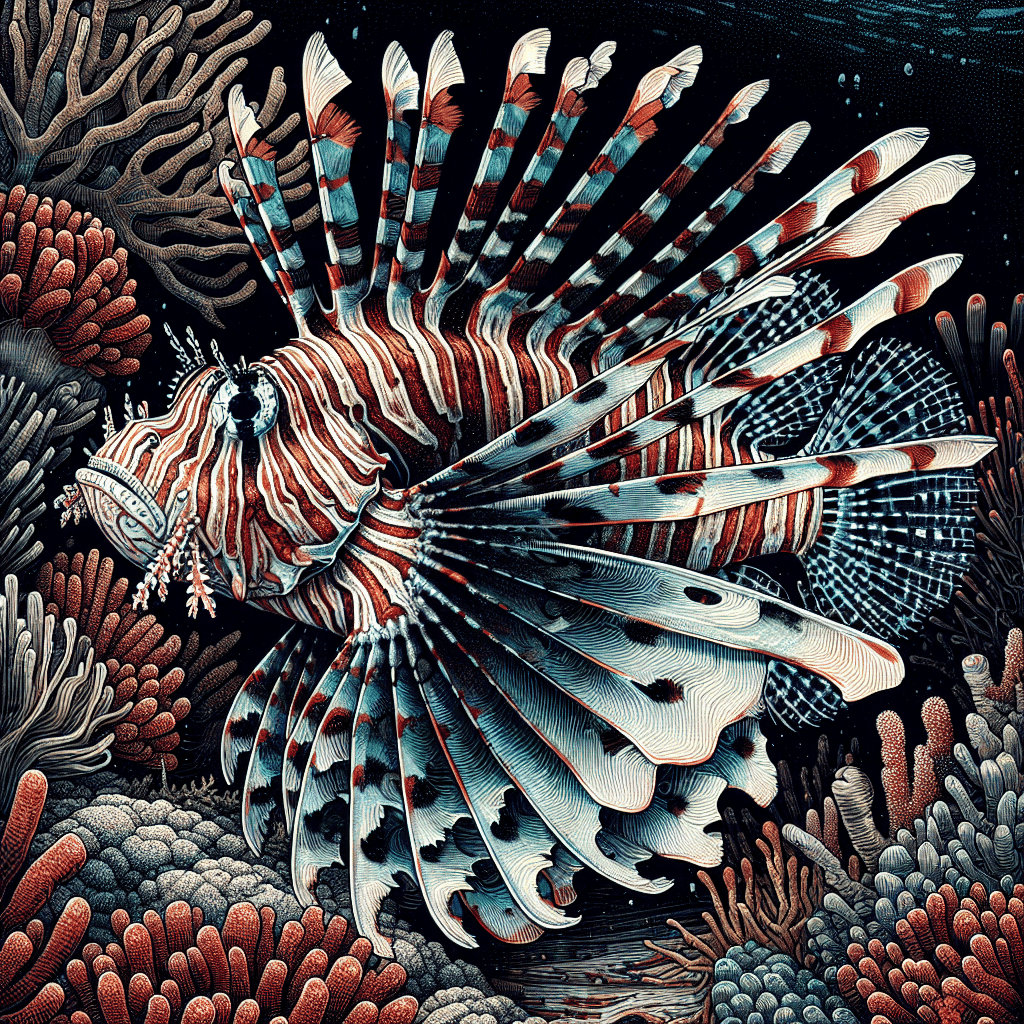The World of Seahorses
Introduction to Seahorses
I find seahorses to be some of the most fascinating creatures in the ocean. They are actually fish, belonging to the family Syngnathidae, and are named for their unique equine appearance. With around 36 species found in tropical and temperate coastal waters, these tiny fish have captured the hearts of many aquarium enthusiasts. Seahorses have flesh-covered bony plates instead of scales, and their eyes can move independently, which is quite an impressive feature (SeaWorld, National Geographic).
One of the most intriguing aspects of seahorses is their prehensile tails, which they use to grip onto various holdfasts on the seafloor. This helps them avoid drifting away and is also a part of their courtship behavior, allowing them to link together when they mate.
Types of Seahorses
There are many species of seahorses that vary in size and habitat preferences. The tiniest species can be no bigger than a lima bean, while the largest can reach over a foot in length from head to tail tip. Here’s a quick overview of some common types of seahorses:
| Seahorse Species | Size (Approx.) | Habitat |
|---|---|---|
| Pygmy Seahorse | 0.6 inches | Gorgonian corals or sea fans |
| Common Seahorse | 4 – 8 inches | Seagrasses, mangroves, shallow waters |
| Big-Belly Seahorse | 10 – 12 inches | Coastal waters, seagrass beds |
| Spiny Seahorse | 6 – 9 inches | Coral reefs, shallow lagoons |
Seahorses are sparsely distributed in most populations, found at about 0.06 per square meter. However, they can occur in higher densities, especially in certain lagoons and tidal lakes. For instance, a tidal lake in the Bahamas has been noted to have up to 0.66 per square meter (Project Seahorse).
These unique features and their diverse habitats make seahorses a captivating subject for both casual observers and dedicated aquarium hobbyists. If you’re considering adding these enchanting fish to your reef tank, it’s essential to understand their needs and care requirements. For more information on the types of marine fish suitable for reef tanks, check out our section on marine fish.
Seahorse Conservation
Threats to Seahorse Populations
Seahorses face numerous threats that significantly impact their populations worldwide. One major issue is overfishing, where commercial fishermen unintentionally catch millions of seahorses as bycatch every year. Targeted fishing also occurs to meet the demand for dried trinkets and to supply the unregulated traditional medicine market, particularly in Asia (National Geographic).
Another significant threat is habitat destruction caused by pollution and coastal development. These activities degrade the environments where seahorses thrive, such as seagrass beds and coral reefs. The Traditional Chinese Medicine Trade and the Curio Trade further exacerbate the situation, as seahorses are often collected for these purposes. It’s estimated that less than 1,000 seahorses survive more than six weeks after being taken from their natural habitats.
| Threats | Description |
|---|---|
| Overfishing | Millions caught as bycatch; targeted fishing for trinkets and medicine |
| Habitat destruction | Pollution and coastal development harm natural habitats |
| Traditional Chinese Medicine Trade | Seahorses collected for medicinal use |
| Curio Trade | Seahorses sold as dried souvenirs |
Conservation Efforts
To combat these threats, various conservation efforts are underway. Organizations like Project Seahorse focus on raising awareness and promoting sustainable practices. They work to establish marine protected areas that safeguard seahorse habitats from destruction.
Additionally, there are initiatives aimed at regulating the trade of seahorses. These include enforcing legal protections and creating sustainable fishing practices. Education campaigns help inform the public about the importance of seahorses in marine ecosystems and the need for responsible pet ownership, as many seahorses are kept in home aquariums.
The conservation status of seahorses is concerning, with scientists believing that many species are threatened and some populations are in rapid decline. Supporting conservation efforts is crucial for ensuring the survival of these unique creatures (SeaWorld).
For hobbyists interested in maintaining a healthy reef tank, understanding the importance of seahorse conservation can enhance their appreciation of these remarkable fish. If you’re looking to learn more about the care of marine fish, check out our section on marine fish.
Seahorse Reproduction
Seahorse reproduction is one of the most fascinating aspects of their biology. Unlike most species, seahorses have a unique method of breeding that involves male pregnancy. This role reversal is not just interesting but also essential to their reproductive strategy.
Male Pregnancy in Seahorses
In the world of seahorses, males take on the role of caregivers during pregnancy. When a female seahorse is ready to mate, she transfers her eggs into the male’s brood pouch. This pouch acts as a safe environment for the developing embryos, similar to a mammalian womb. The male fertilizes the eggs inside the pouch, ensuring paternity. The embryos receive oxygen and nutrition through a capillary network and placental fluid (Project Seahorse).
Male seahorses have specialized skeletal muscles near the pouch opening that help control the expulsion of the young during birth. This ability allows them to consciously manage the birthing process. After a gestation period ranging from 10 days to six weeks, depending on the species and water temperature, the male gives birth. During this time, he may pump and thrust for hours, releasing anywhere from a few to several thousand tiny seahorses, each measuring about 8-10 mm.
Seahorse Courtship and Mating
Courtship in seahorses is an elaborate and captivating process. Mating often begins with a series of intricate dances where the male and female swim together, twisting and turning in a synchronized display. This behavior strengthens their bond and prepares them for the mating process.
Once the courtship is complete, the female deposits her eggs into the male’s brood pouch. The entire process can take several hours, showcasing the unique partnership between the two. After the male fertilizes the eggs, he will carry them in his pouch until they are ready to hatch.
After giving birth, the male seahorse is ready to mate again almost immediately, starting the cycle anew. This rapid turnaround allows for the continuation of the species and demonstrates the resilience of these remarkable creatures.
In summary, the reproductive strategies of seahorses highlight their unique biological traits and the fascinating dynamics of their mating behaviors. For those interested in keeping these incredible fish, it’s essential to understand their reproduction as it plays a significant role in their care and habitat needs. If you’re looking for more information on maintaining a healthy environment for seahorses, check out our articles on marine fish and seahorse tank setups.
Unique Seahorse Features
Seahorses are fascinating creatures with a range of unique features that set them apart from other fish. In this section, I’ll dive into their physical characteristics and behavioral adaptations that make them such intriguing animals.
Physical Characteristics
Seahorses have some pretty distinct physical traits. Unlike most fish, they have flesh-covered bony plates instead of scales. Their eyes can work independently of each other, which is quite handy for spotting predators or prey. One of the most interesting features is their prehensile tails, which they use to grip holdfasts on the seafloor to avoid drifting away. During courtship, these tails also help them link to each other, creating a beautiful bond.
| Feature | Description |
|---|---|
| Body Structure | Flesh-covered bony plates instead of scales |
| Eye Function | Eyes operate independently |
| Tail | Prehensile tail used for gripping |
| Size Range | Tiny species can be as small as a lima bean; largest over a foot long |
Seahorses are relatively poor swimmers. They rely on frantic beats of a dorsal fin (up to 70 times per second) to propel themselves and use tiny pectoral fins for stability and steering. This makes them susceptible to exhaustion, especially in strong currents (National Geographic).
Behavioral Adaptations
When it comes to feeding, seahorses are ambush predators. They have long snouts that act like vacuum cleaners, allowing them to suck up plankton and other small prey almost continuously. They often hold still and wait for krill, copepods, and fish larvae to float by, then quickly snap them up with surprising speed (National Geographic).
In terms of reproduction, seahorses have a role reversal that’s truly unique. The males carry the young! During mating, the female deposits her eggs into the male’s brood pouch, where he incubates and nourishes them for two to four weeks. When the time comes, he gives birth to fully developed fry, which can number from dozens to over a thousand, depending on the species (National Geographic).
These fascinating features and behaviors not only make seahorses a captivating topic for aquarium enthusiasts but also highlight the importance of understanding and conserving their populations. If you’re interested in adding other marine fish to your tank, check out our articles on marine fish like clownfish or tangs to enhance your reef tank experience.
Seahorse Habitats
Seahorses are fascinating creatures that thrive in a variety of environments. Understanding where these unique fish live helps me appreciate their needs and care in an aquarium setting.
Seahorse Distribution
Seahorses can be found in many shallow water habitats, including seagrasses, mangroves, coral reefs, sponges, seaweeds, and sandy or muddy bottoms. Some species, like pygmy seahorses, are highly specialized and may only inhabit specific types of corals or sea fans, spending their entire lives on a single sea fan. Interestingly, seahorses have been encountered several kilometers offshore and can be found at depths greater than 100 meters. They have also been discovered in the stomachs of open ocean predators, indicating that some might venture far from shore.
Here’s a quick look at their typical density and distribution:
| Habitat Type | Density (seahorses per m²) | Notes |
|---|---|---|
| General Distribution | 0.06 | Approximately one seahorse per 16.67 m² |
| High Density Areas | Up to 0.66 | Found in tidal lakes and lagoons |
| Special Cases | 1.5 | Noted in a lagoon in Portugal in early 2002 |
Seahorse Camouflage and Migration
Seahorses are masters of disguise, using camouflage to blend seamlessly into their surroundings. They can change colors to match the background and even grow skin filaments to enhance their concealment. This ability not only helps them evade predators but also aids them in hunting small crustaceans. They often ambush prey by waiting patiently for it to pass by before sucking it through their tube-like mouths (Nat Geo Kids).
Some species of seahorses exhibit migratory behavior, moving long distances for various reasons. Juveniles may relocate to adult habitats, while adults might migrate seasonally. Additionally, seahorses can be found drifting in sargassum and other seaweed clumps, which allows for long-distance dispersal. This adaptability to different environments makes them resilient but also highlights the importance of maintaining healthy habitats for their survival.
If you’re interested in adding a seahorse to your aquarium, understanding their natural habitats can greatly enhance your setup. For more tips on how to care for these intriguing fish, check out the section on setting up a seahorse tank.
Seahorse Behavior
Feeding Habits
Seahorses are fascinating creatures, particularly when it comes to their feeding behavior. As ambush predators, they use their long snouts like vacuum cleaners to suck up plankton almost continuously. They hold still and patiently wait for tasty morsels such as krill, copepods, and fish larvae to float by, then they pounce with remarkable speed (National Geographic).
Here’s a quick breakdown of their preferred food sources:
| Food Source | Description |
|---|---|
| Plankton | Tiny organisms found in water |
| Krill | Small shrimp-like crustaceans |
| Copepods | Small crustaceans, vital in oceans |
| Fish Larvae | Young fish, crucial for growth |
Feeding can occur multiple times throughout the day, so providing a steady supply of these foods in a home aquarium is key to keeping seahorses healthy.
Social Interactions
When it comes to social interactions, seahorses are quite unique. They are generally solitary creatures, but they do exhibit interesting behaviors, especially during courtship and mating. Seahorses are known for their elaborate courtship rituals, which can involve dancing and synchronized movements. This behavior helps strengthen the bond between potential mates.
In terms of distribution, seahorses can be found sparsely in most populations, averaging about 0.06 per m², with higher densities in specific areas like lagoons. For example, a tidal lake in the Bahamas has recorded up to 0.66 per m², while a lagoon in Portugal showcased around 1.5 per m² at one point (Project Seahorse).
Seahorses also engage in migration, moving for various reasons such as young seahorses finding new habitats or adults relocating seasonally. Some even hitch rides in floating seaweed, which can lead to long-distance dispersal (Project Seahorse).
Understanding these social dynamics is crucial for anyone considering keeping seahorses in a marine fish tank, as it helps in creating an environment that promotes their natural behaviors.
Interesting Seahorse Facts
Seahorse Life Cycle
The life cycle of a seahorse is quite fascinating and unique compared to other fish. Seahorses undergo several stages from birth to adulthood. Here’s a simple breakdown of their life cycle:
| Stage | Description |
|---|---|
| Birth | Male seahorses carry the young in a pouch and give birth to up to 2,000 tiny seahorses at once. |
| Juvenile | After birth, they are independent and must fend for themselves. They grow rapidly during this stage. |
| Adult | Depending on the species, they reach maturity in about 4 to 6 months. Adult seahorses can live for up to 5 years in the wild. |
Seahorses are known for their unique reproductive process, where males carry the fertilized eggs in a pouch until they hatch. This characteristic is rare among fish and is one of the reasons seahorses are so intriguing.
Conservation Status
Seahorses face numerous threats, leading to concerns about their conservation status. According to the IUCN Red List, both seahorses found in the Mediterranean, Hippocampus hippocampus and Hippocampus guttulatus, are classified as Near Threatened due to declining populations from habitat degradation caused by coastal development and destructive fishing gears.
Recent studies indicate that some populations of White’s seahorse have declined by as much as 95% due to habitat destruction. Of the 42 seahorse species assessed, 14 are at risk, including one endangered species. Pollution, coastal development, and rampant overfishing pose significant threats to seahorses globally. Commercial fishermen capture millions of seahorses as bycatch every year, which is a major concern for their survival.
To help protect these unique creatures, it’s essential to be aware of their conservation status and the various challenges they face in the wild. If you’re passionate about marine life, consider supporting organizations dedicated to preserving seahorse habitats and populations. For more on marine fish, check out our articles on marine fish and other reef tank inhabitants like clownfish and lionfish.
Care and Keeping of Seahorses
Caring for seahorses can be a rewarding experience, but it requires some specific equipment and knowledge. Here’s how to set up a proper environment for them and ensure they receive the right nutrition.
Setting Up a Seahorse Tank
When it comes to setting up a tank for seahorses, there are a few important factors to consider:
- Tank Size: Seahorses need space to thrive. A minimum of 30 gallons is recommended for a small group.
- Water Conditions: Maintain a stable temperature between 72°F and 78°F (22°C to 26°C). The salinity should be around 1.020 to 1.025.
- Filtration: A gentle filtration system is crucial. Seahorses are sensitive to strong currents, so using a sponge filter or a low-flow power filter is ideal.
- Decor: Provide plenty of hiding spots with live rock, seagrasses, and other decorations that mimic their natural habitat. This setup allows them to camouflage and feel secure (The Seahorse Trust).
- Lighting: Use low to moderate lighting to replicate their natural environment. This also helps maintain live plants if included.
| Tank Feature | Recommendation |
|---|---|
| Minimum Tank Size | 30 gallons |
| Temperature Range | 72°F – 78°F (22°C – 26°C) |
| Salinity Level | 1.020 – 1.025 |
| Filtration Type | Gentle filtration (sponge filter) |
Seahorse Diet and Feeding Schedule
Feeding seahorses can be quite fun, as they have specific dietary needs. Here’s a breakdown of their diet:
- Food Types: Seahorses primarily feed on small crustaceans, such as brine shrimp, copepods, and mysis shrimp. It’s crucial to offer a varied diet to keep them healthy.
- Feeding Frequency: I typically feed my seahorses 2-3 times a day. They have small stomachs, so it’s best to provide smaller portions multiple times rather than a large amount at once.
- Supplementation: Consider adding vitamin supplements to their food to enhance their health, especially if they’re captive-bred.
| Food Type | Recommended Frequency |
|---|---|
| Brine Shrimp | 2-3 times daily |
| Mysis Shrimp | 2-3 times daily |
| Copepods | Every feeding |
It’s essential to monitor their feeding habits. If they seem uninterested, check water quality and ensure the food is appropriate for their size and species. Remember, seahorses can be sensitive to changes in their environment, so keeping everything stable will help them thrive. For more insights into keeping a diverse aquarium, check out our articles on marine fish and various reef species like clownfish and tangs.



